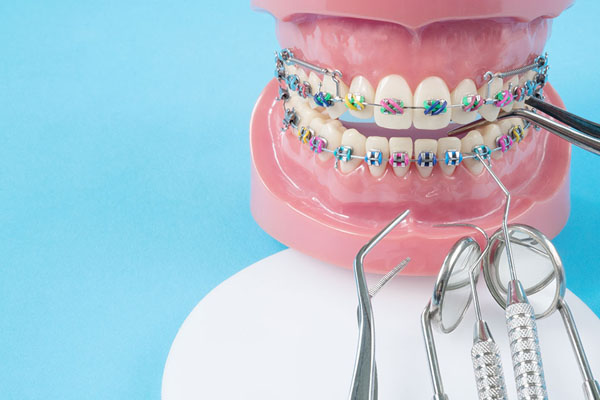Invisalign® vs. Braces in Frisco, TX
Finding the Best Orthodontic Treatment Near You in North Dallas
Searching for an orthodontist near you in Frisco? You’re not alone. Invisalign clear aligners remain a top choice for patients seeking a subtle way to straighten their teeth, and choosing between Invisalign and traditional braces is one of the most important decisions for your oral health journey. At Renew Family Dentistry, our experienced dentists in Frisco, TX, help patients throughout Little Elm, Richwoods, Deerfield, and surrounding North Dallas communities achieve their perfect smile with personalized care tailored to their unique dental needs.
Ready to transform your smile? Contact our dental office in Frisco today at 469.633.0550 to schedule your orthodontic consultation. We welcome new patients and offer flexible payment plans to make your dream smile affordable.
Modern Orthodontic Solutions: Understanding Your Options
Today’s orthodontic treatment options go far beyond traditional metal brackets and wires. Whether you’re dealing with misaligned teeth, bite problems, or moderate alignment issues, both Invisalign clear aligners and traditional braces can help you achieve straighter teeth while improving your overall oral health.
Invisalign Clear Aligners: The Nearly Invisible Solution
Invisalign treatment represents a revolutionary approach to orthodontic care, using smooth plastic aligners made from advanced SmartTrack material. These virtually invisible removable aligners gradually straighten your teeth without the need for metal brackets and wires. Digital scanning has all but replaced traditional dental impressions, making the process more comfortable and accurate.
How Invisalign Works: Dr. Christopher Probst and Dr. Jiaying Ren create your personalized treatment plan using cutting-edge 3D imaging technology. You’ll receive a series of custom-made Invisalign trays that you wear for one to two weeks each, making gradual adjustments to move your teeth into their desired position. The entire Invisalign treatment typically takes 12 to 18 months, with fewer office visits required compared to traditional braces.
Traditional Metal Braces: The Time-Tested Approach
Traditional braces work by applying consistent pressure through metal brackets attached to your teeth, connected by metal wires that our orthodontist adjusts during regular appointments. This proven method can handle complex cases and severe misalignments that might not be suitable for clear aligners.
The Braces Process: Your orthodontic treatment begins with traditional metal brackets bonded to each tooth, connected by an archwire. Regular adjustments every four to six weeks gradually move your teeth into proper alignment. While treatment duration varies, most patients wear braces for approximately 24 months, depending on the complexity of their dental issues.
To schedule your appointment at our dental office in Frisco, contact our dentists at 469.633.0550.

Invisalign vs Braces: A Comparison
Appearance and Confidence
- Invisalign Aligners: Nearly invisible, clear plastic trays mean most people won’t notice you’re undergoing orthodontic treatment. Perfect for adults and teens who want to maintain their confident smile throughout treatment, especially during special occasions.
- Traditional Braces: Metal brackets and wires are highly visible, though some patients embrace them as part of their orthodontic journey. Clear braces (ceramic brackets) offer a more discreet alternative to traditional metal braces.
Cost Comparison and Payment Options
- Invisalign Treatment: Generally, Invisalign costs from $3,000 to $8,000, depending on case complexity and geographic location. Many dental insurance plans now cover Invisalign, similar to traditional braces.
- Traditional Metal Braces: Typically cost $3,000-$7,000, making them slightly more affordable than Invisalign clear aligners. Our dental office offers flexible payment plans to make both treatments accessible.
Treatment Duration and Effectiveness
- Invisalign: Most patients complete treatment in 12-18 months, with some complex cases requiring additional aligners. Over 72 percent of patients who received Invisalign required additional aligners after a year in severe cases involving complex jaw alignment.
- Traditional Braces: Average treatment time is 24 months, though this varies based on individual dental needs. Highly effective for complex orthodontic problems and severe misalignments.
Comfort and Daily Life Impact
- Invisalign Aligners: Smooth plastic material eliminates irritation from brackets and wires. Removable design allows normal eating, brushing, and flossing. No dietary restrictions mean you can enjoy all your favorite foods.
- Traditional Braces: Fixed brackets and wires can cause initial discomfort and mouth irritation. Certain foods must be avoided to prevent damage. Requires special cleaning techniques around brackets and wires.
Maintenance and Oral Health Benefits
- Invisalign Clear Aligners: Remove for eating, drinking (except water), brushing, and flossing. Easy to maintain proper oral hygiene, reducing the risk of gum disease and tooth decay. Clean aligners regularly to prevent bacterial buildup.
- Traditional Braces: Require careful cleaning around metal brackets and wires. Higher risk of plaque buildup if not properly maintained. Regular orthodontic visits ensure optimal oral health throughout treatment.
Who’s the Ideal Candidate? Matching Treatment to Your Needs
Best Candidates for Invisalign Treatment:
- Adults and teens with mild to moderate alignment issues
- Patients prioritizing discretion and aesthetics
- Those with active lifestyles or who play musical instruments
- Individuals committed to wearing aligners 22+ hours daily
- Patients seeking fewer office visits
Best Candidates for Traditional Braces:
- Complex orthodontic cases require precise control
- Severe misalignments or bite problems
- Younger patients who may not consistently wear removable aligners
- Cases involving significant jaw repositioning
- Budget-conscious patients seeking effective treatment

Frequently Asked Questions
Can I switch from traditional braces to Invisalign treatment?
In many cases, switching from braces to Invisalign is possible, but requires evaluation by your orthodontist. Factors like current progress, case complexity, and remaining treatment needs determine if switching makes sense for your unique dental situation.
How do I find the best “dentist near me” for orthodontic treatment?
Look for a dental office that offers both Invisalign and traditional braces, has experience with complex cases, provides flexible payment plans, and serves your local area. Our Frisco dental office checks all these boxes and more.
What makes Invisalign popular for North Dallas patients?
In 2025, Invisalign is popular due to advancements in aligner technology, improved comfort, and faster treatment times, making it particularly appealing for busy professionals and students in the Frisco area.
Can I play sports with Invisalign or braces?
Invisalign aligners are removable, making sports participation easier without interference. Traditional braces may require a protective mouthguard for contact sports, but most patients adapt quickly to both options.
Schedule Your Orthodontic Consultation to Get Your Customized Treatment Plan at Renew Family Dentistry!
Ready to straighten your teeth and boost your confidence? Contact Renew Family Dentistry, your trusted Invisalign providers in Frisco, TX, by calling 469.633.0550. We proudly serve patients throughout Little Elm, Richwoods, Deerfield, and all surrounding North Dallas communities.
Your new smile is just a phone call away. Let us help you decide between Invisalign and traditional braces with a comprehensive consultation that considers your unique dental needs, lifestyle, and goals. Together, we’ll create a treatment plan that delivers the confident smile you deserve.


